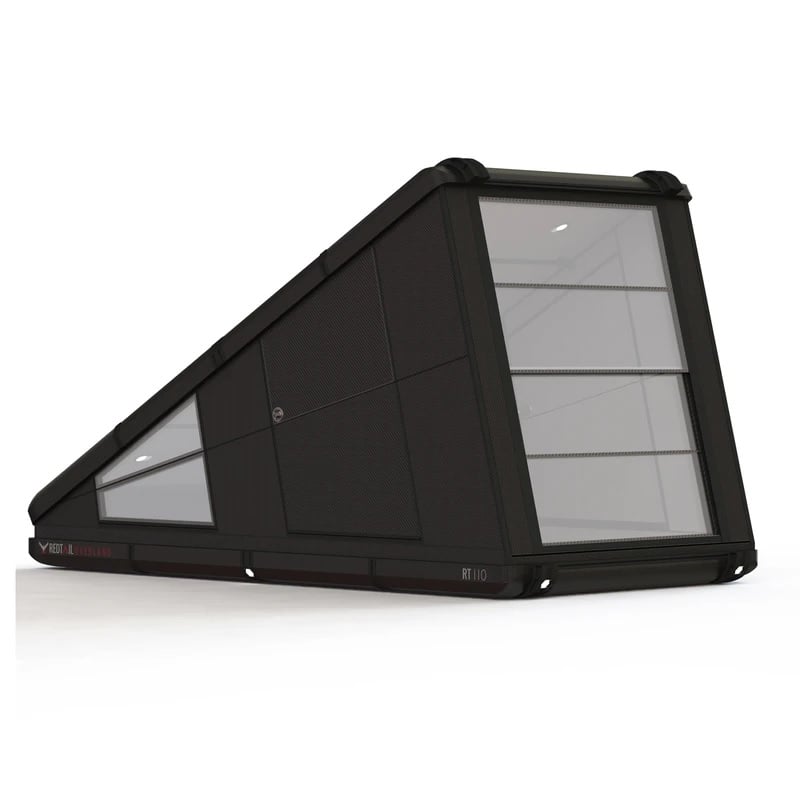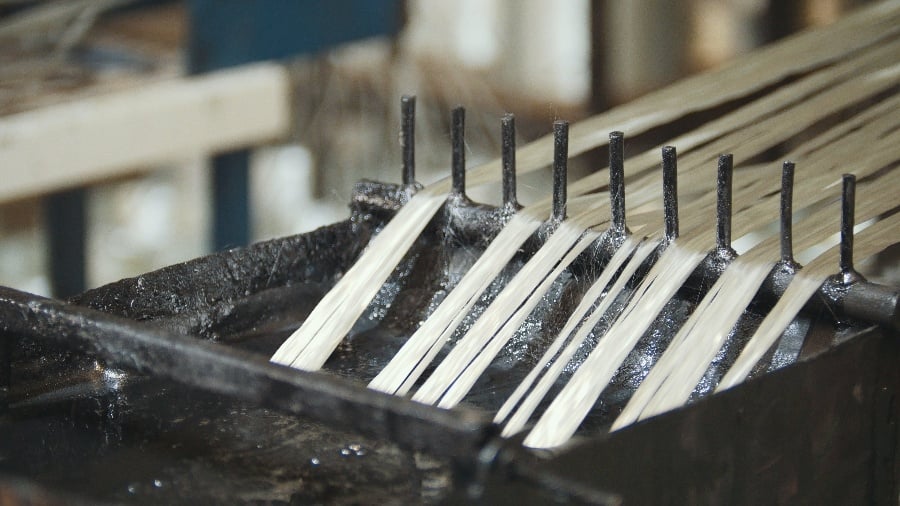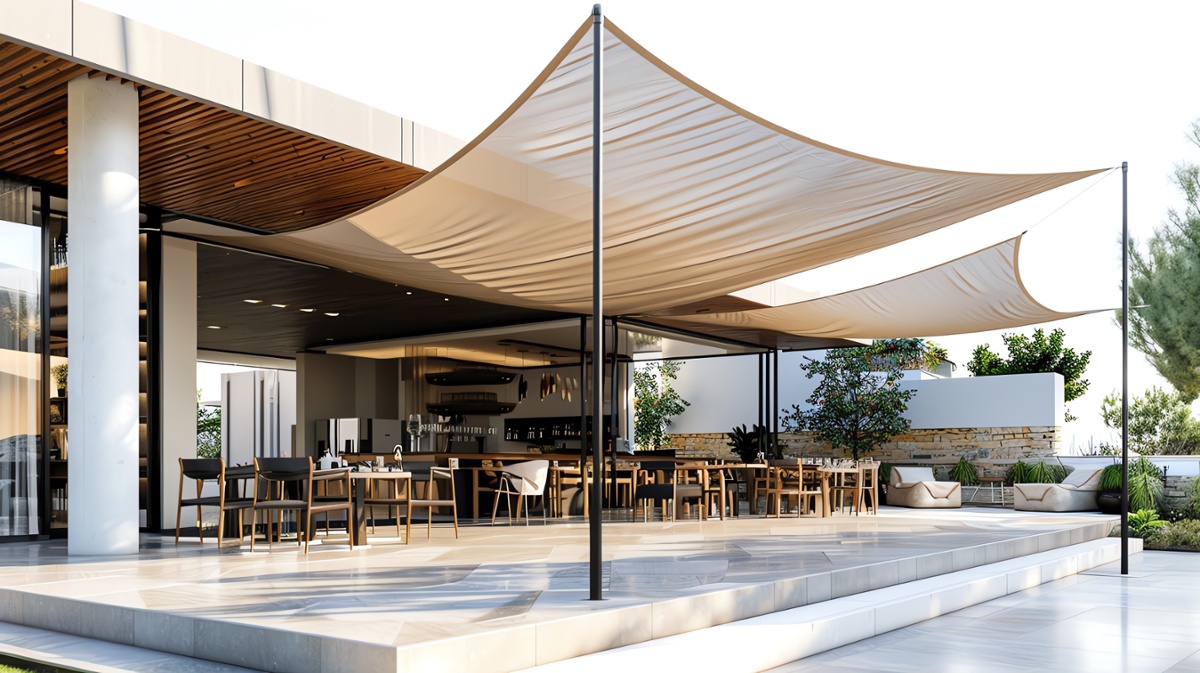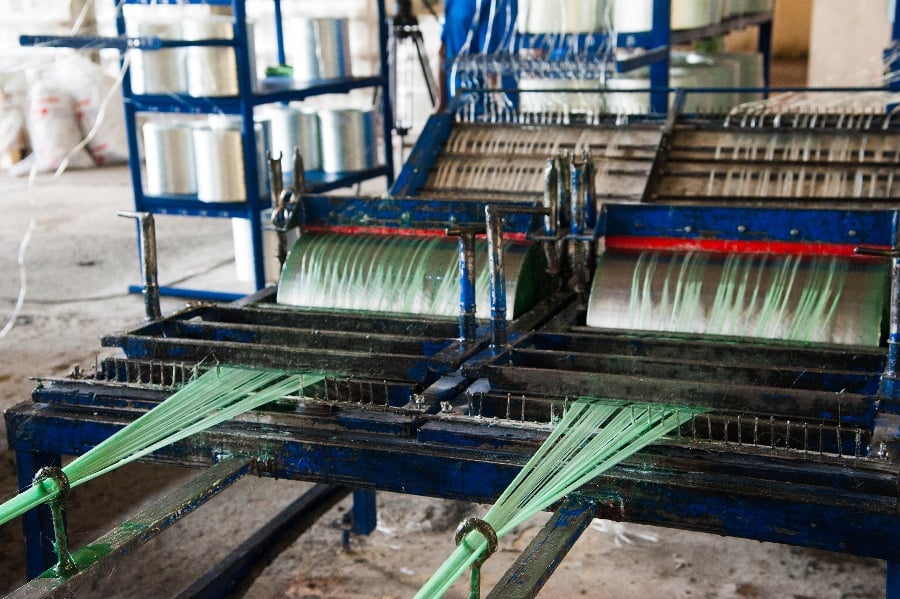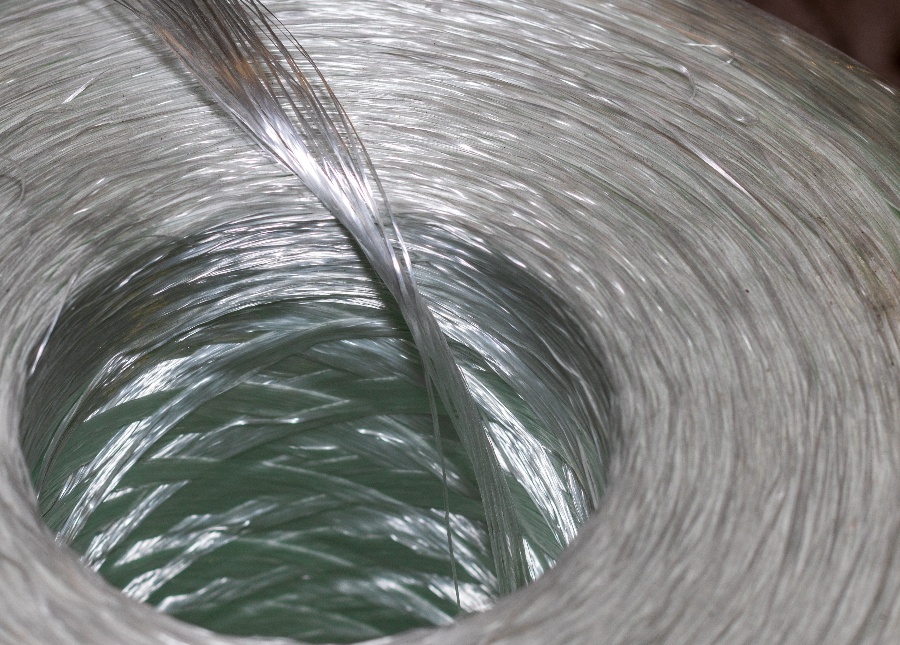
Composite products have increasingly become a common feature of today’s world, used heavily in the building and construction, infrastructure, utility distribution and auto industries.
What are the differences between fiberglass and carbon fiber? Each has slightly different properties that may make it better suited for particular applications. This post breaks down some key differences between fiberglass and carbon fiber.
Fiberglass begins its existence as inorganic silica sand, which along with limestone and soda ash is heated to an extreme temperature ─ 2500 degrees Fahrenheit, to be precise. At this temperature, the sand takes on a molten form. Special forming equipment then draws the molten glass out into incredibly thin strands.
Carbon fiber, by contrast, starts out as organic polymers ─ long molecular strings bound together with carbon atoms. In many cases, these polymers are turned into carbon fiber through the polyacrylonitrile (PAN) process. Polyacrylonitrile is the name of the particular polymer used to create carbon fiber.
The multi-step PAN process involves spinning the polyacrylonitrile into fibers, making chemical alterations to stabilize it, then carbonizing and treating the surface of the fibers.
The result is a fiber even thinner than fiberglass, though it can be introduced to the pultrusion process in exactly the same way as fiberglass.
Fiberglass vs Carbon Fiber
Now that you have a basic idea about the origins of fiberglass and carbon fiber, we look at the differences they display when used as a pultrusion profile.
We highlight four of the most significant points of comparison:
Weight and Strength
Carbon fiber is a fibrous carbon material that is strong and has a lower density than aluminum, corrosion resistance, high-temperature resistance, and electrical conductivity like copper. Carbon fiber is a highly processed material and is commonly used in high-end products.
The advantage is that it is relatively lightweight, is very conductive electrical and thermally as well as providing high mechanical properties. Carbon weighs about 70% of fiberglass.
Carbon fiber can be processed into fabrics, felts, mats, tapes, paper and other materials. It is sometimes added as a reinforcing material to materials such as resin, metal, ceramic, concrete, etc. to form a composite material. Carbon fiber-reinforced composite materials can be used as aircraft structural materials, electromagnetic shielding materials, artificial ligaments and other body substitute materials, as well as for the manufacture of motorboats, industrial robots, automotive leaf springs and drive shafts.
Carbon fiber also exhibits a greater fiber strength than fiberglass. This allows a smaller and lighter carbon section to have the same strength of a bigger and heavier fiberglass section
For instance, carbon fiber has a fiber strength of 4127, while the type of fiberglass known as E Glass has a fiber strength of 3450 — approximately 16% less.
However, the differences between the two materials come into focus when you consider these factors in tandem. The strength-to-weight ratio expresses the strength of each material relative to its weight.
E Glass has a strength-to-weight of 564, while carbon fiber has a strength-to-weight of 1013 — nearly twice as strong.
This high strength relative to weight means that manufacturers need to use far less carbon fiber when pultruding a given product. As a result, pultruded carbon fiber products can often get away with significantly thinner cross-sections.
This is where the real weight reduction comes into play, also less resin will need to be used.
Currently, carbon fiber is widely used in civil, military, construction, chemical, industrial, aerospace and auto industries.
Rigidity and Toughness
In addition to being stronger than fiberglass, carbon fiber is also stiffer. This extra rigidity can prove highly useful, allowing manufacturers to meet far more precise stiffness needs.
For instance, the silicon tracker modules inside of CERN's Large Hadron Collider required a degree of stiffness that only carbon fiber pultruded profiles could supply.
However, this increased rigidity does not necessarily mean that carbon fiber makes a better choice for all applications.
On the other hand fiberglass ─ with its relatively supple nature ─ is a far better choice for applications that entail high flex patterns. Carbon fiber, being relatively rigid, may not be suitable for those applications.
On the other hand, fiberglass is an inorganic non-metallic material with excellent properties. It is a glass ball or waste glass as a raw material, which is subjected to the pultrusion technique to form glass fiber. The diameter of the glass fiber is from several micrometers. From one-fifth to one-tenth the diameter of a wire, a bundle of fibers is made up of hundreds of thousands of monofilaments.
Just as with the relationship between weight and strength, the rigidity of a pultrusion material affects its long-term toughness.
Fiberglass is generally considered tougher than carbon fiber since its more flexible nature enables it to withstand stress and physical abuse more easily.
Despite being stronger, carbon fiber usually has a lower breaking point. This makes it more susceptible to damage over time.
Thermal Expansion
Compared to materials like steel and aluminum, fiberglass has a relatively small coefficient of thermal expansion — meaning it won't get significantly larger as the result of temperature changes.
That said, if exposed to extreme enough variations — or if tolerances are especially tight — then fiberglass pultrusion may not be a suitable choice.
Carbon fiber has a remarkable property in this regard: it actually has a negative coefficient of thermal expansion. As a result, carbon fiber expands as temperatures go down.
This tendency effectively counterbalances the fact that the resin matrix used to bind together the fibers has a positive coefficient, essentially leading to a near-neutral overall coefficient.
The Takeaway
Fiberglass is relatively more cost-effective. Producing long carbon fibers is far more a time-consuming and difficult process, which naturally makes carbon fiber more expensive.
In a similar vein, the broader range of uses for fiberglass — including non-protrusion products — helps to ensure that its price point remains more competitive.
Ultimately, both fiberglass and pultruded carbon fiber exhibit unique properties. Carefully consider the needs and parameters of a given product in order to select the material best suited for your needs.
For more information to decide between using carbon fiber and glass fiber, contact the pros at Tencom.






